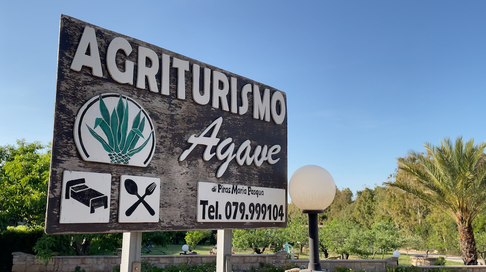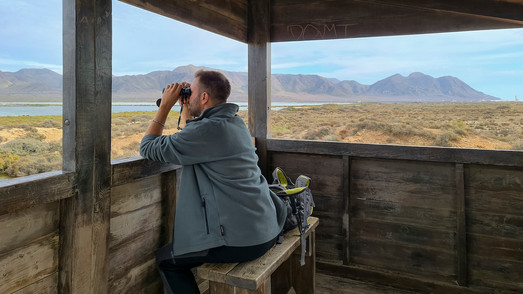Re-introducing ecotourism in the Mediterranean
- Natalie Beckett
- Apr 5, 2024
- 4 min read
Natalie Beckett reveals a series of new eco tours aimed at protecting the Mediterranean's biodiversity across a network of natural parks that are taking the lead on responsible tourism

The Mediterranean, with its sparkling blue sea, sandy coves tucked among cliffs and many picturesque islands, is famed for its natural beauty. And over the past decade, certain trends and events, including the move towards greater awareness of wellbeing, the impact of the pandemic and the increased reach of social media, have propelled nature-centric trips and holidays into the mainstream. As more tourists flock to the Med, natural parks in the region have reaped the benefits, but the footfall has come at a cost. Exploitation of the Mediterranean’s most precious natural habitats has increased and this popularity is putting a strain on the Med’s biodiversity.
Ironically, it is the beauty of these natural landscapes and their Instagrammable potential that has everyone visiting in the first place. Yet despite this, there are also natural parks in the region that remain undiscovered and are suffering the opposite problem, a lack of tourism. But a group of natural parks and conservation and tourism organisations are combating this by taking the reins and running their own ecotourism experiences. Operating as the MEET (Mediterranean Experience of Eco Tourism) Network and set up in 2018, the parks are empowering their local communities and supporting nature conservation efforts, while also attracting tourists. MEET was created with the belief that if the parks played a more active role in tourism, their biodiversity would be protected and any profits would drive local economic growth.
Some of MEET's ecotourism experiences across the 9 protected areas of the Mediterranean
Photos @MEET (authors: Christoper Willan and Richard Hammond/Green Traveller)
With support from EU-funded programmes (which has identified sustainable tourism development as a priority for the region), with funding for the trips provided by DestiMED PLUS, the MEET Network created a catalogue of what they call ‘park-led’ ecotourism experiences. These multi-day ecotourism packages aim to allow visitors to re-discover Mediterranean natural parks through a new nature-focused lens, while also giving them the opportunity to connect with local people and their traditions. The footprint per tourist was measured for each trip and is expressed below in terms of Global hectares* (gha).
=======
Green Traveller’s videographer Richard Hammond journeyed around the Mediterranean to experience MEET’s unique form of ecotourism first hand, filming a series of videos about the unique experiences in each location. Below are all the videos he produced, providing a taste of what travellers can expect:
Asterousia Mountains Biosphere Reserve, Greece
This is the stunning Asterousia Mountains Biosphere Reserve in Crete, Greece with its rocky cliffs, sandy beaches, and fascinating wildlife. From olive oil production to hiking the sacred summit of Kofinas, MEET’s multi-day experience includes a memorable hike through the Agiofarago Gorge and the chance of a refreshing swim at Agiofarago beach.
>> This itinerary has an ecological footprint of around 0.025 gha* per tourist
Divjakë Karavasta National Park, Albania
Albania isn’t always first on the list for Western tourists, which is what makes visiting the largely untouched Divjakë Karavasta National Park such a special experience. Including boat tours and sunrise hikes, as well as beer tasting and a stonemasonary workshop, MEET’s multi-day tour here strikes a balance between adventure and relaxation.
>> This itinerary has an ecological footprint of around 0.11 gha* per tourist
Cres Lošinj Natura 2000 Site, Croatia
In Croatia we explore the stunning Cres Lošinj Natura 2000 Site on an ecotourism tour designed to appeal to all the senses. Discover the mountainous islands of Cres and Losinj and enjoy their pristine beaches and clear blue waters which are home to the only resident populations of dolphins in the Adriatic Sea.
>> This itinerary has an ecological footprint of around 0.061 gha* per tourist
Porto Conte, Sardinia
A walking, e-bike and sailing tour of this special part of the island. Visit the prehistoric megalithic known as Nuraghi and sail to the Cape known as the “Sleeping Giant” where inside there's the famous stalactite cave of “Neptune’s Grotto”.
>> This itinerary has an ecological footprint of 0.0076 gha* per tourist per day
Ventotene and Santo Stefano Nature Reserve, Italy
The Pontine Islands in Italy are also known as the ‘Pearls of the Mediterranean’. MEET has worked with Ventotene and Santo Stefano Nature Reserve to carefully curate an itinerary that shows them at their best. You can expect delicious vegetarian dinners, guided tours of local historical sites and marine reserves, and charming cobbled Italian streets.
>> This itinerary has an ecological footprint of 0.008 gha* per tourist per day
Cabo de Gata-Níjar Natural Park, Andalusia, Spain
Expect a proper escape into the wilderness on a four- or five-day tour through Andalusia’s Cabo de Gata-Níjar Natural Park. The ecotourism experience here aims to emphasise the park’s lesser-known parts and includes a hike with a local shepherd and their endangered Celtiberian goats, stargazing, and a visit to a traditional salt flat.
>> This itinerary has an ecological footprint of 0.09 gha* per tourist
Bouches de Bonifacio, Corsica
From Bonifacio, the oldest city on Corsica, you’ll head out to the Natural Reserve where you meet local producers who will show you their land, their craft and will introduce you to local production and tradition, including a Corsican wine Tasting, permaculture garden with seasonal fruits and vegetables and edible flowers. You’ll also take a trip out by boat to go snorkelling in the clear waters of the Lavezzu Island.
>> This itinerary has an ecological footprint of around 0.078 gha per tourist
La Garrotxa Volcanic Zone Natural Park, Spain
La Garrotxa Volcanic Zone Natural Park in Catalonia has become a role model for sustainable tourism across the Mediterranean region. The highlight is walking across dormant volcanoes, while learning about geology from a local guide.
>> This itinerary has an ecological footprint of 0.097 gha per tourist.
Protected Area of North Karpathos and Saria Island, Greece
If you’re looking for a taste of local life in Greece, you’ll do no better than a visit to the North Karpathos and Saria Island Protected Area. The multi-day ecotourism experience here includes snorkelling in crystal-clear waters, guided walks around historic towns, visits to local archaeological museums and a cooking demonstration followed by live Karpathian music and dance lessons.
>> This itinerary has an ecological footprint of around 0.065 gha* per tourist
==
This article appeared in the April/May 2024 issue of the Green Traveller magazine.
*According to the Global Footprint Network, Global Hectares "are the accounting unit for the Ecological Footprint and Biocapacity accounts. These productivity weighted biologically productive hectares allow researchers to report both the biocapacity of the earth or a region and the demand on biocapacity (the Ecological Footprint)".












Comments